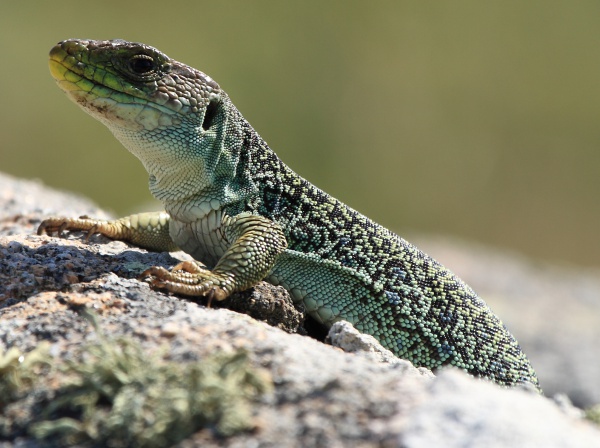Facts About Ocellated lizard
The ocellated lizard, often referred to as the jeweled lizard, is a stunning reptile belonging to the Lacertidae family. Native to southwestern Europe, it stands out as one of the largest lizards in its family, with adults reaching an impressive 90 cm in length and weighing over half a kilogram.
These lizards have a robust build and a distinctive serrated collar. Males are especially notable for their broad heads. Their colors range from green to gray or brown, adorned with black stippling that forms unique patterns across their bodies.
You will find these lizards primarily on the Iberian Peninsula, which includes Spain and Portugal, as well as parts of France and Italy. They thrive in dry, bushy areas and can adapt to various environments, even those at elevations as high as 2,100 meters in southern Spain.
Ocellated lizards have a diverse diet that primarily consists of large insects, birds’ eggs, other reptiles, and occasionally small mammals. They breed in late spring or early summer, with females laying up to 22 eggs in hidden spots under stones or soil. These lizards reach sexual maturity at around two years of age.
According to the IUCN Red List of Threatened Species, the ocellated lizard is classified as Near Threatened. In Spain, they are protected by law, making it illegal to capture or trade them. Interestingly, in the past, these lizards were part of traditional cuisine in Extremadura, Spain, where they were cooked in a stew known as "guisado."

 Portugal
Portugal